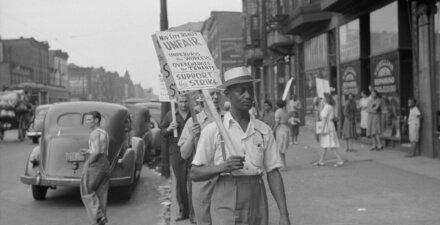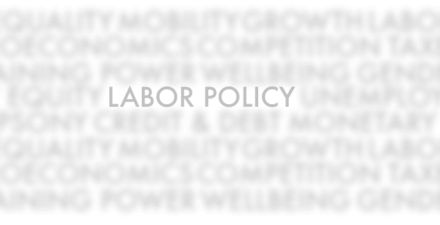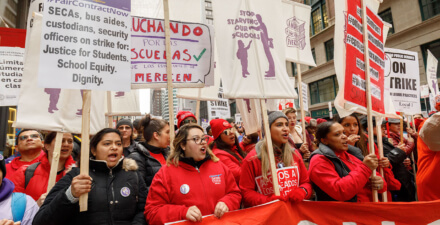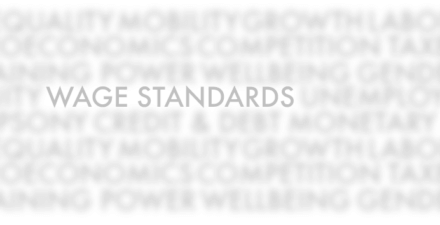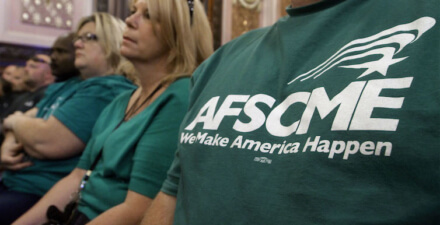Building worker power in the United States
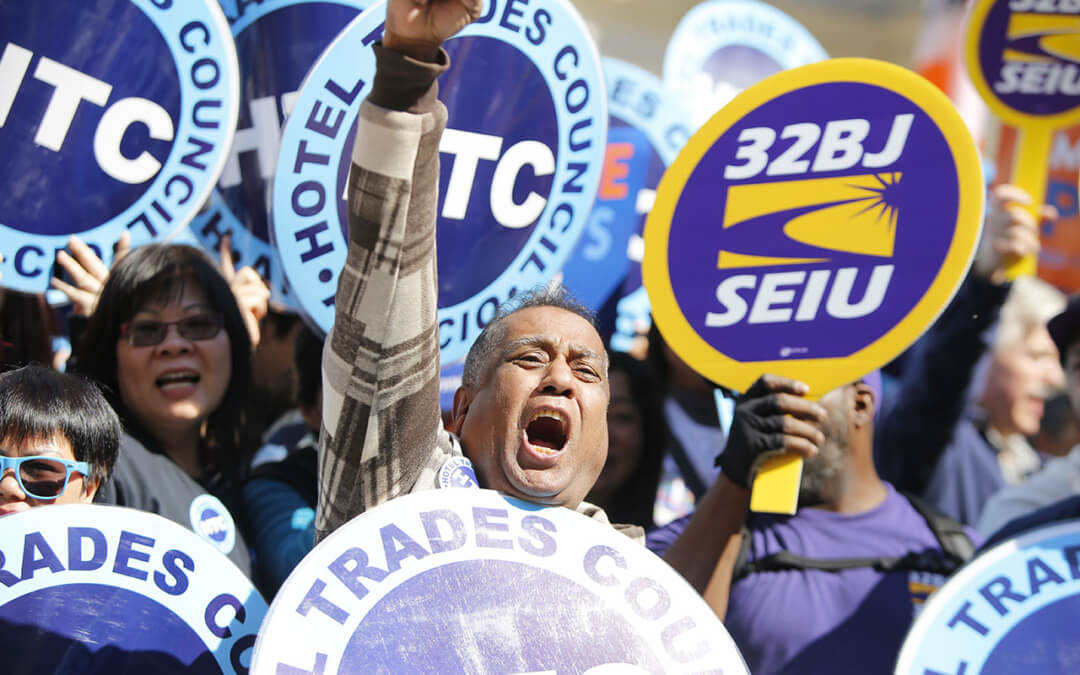
Wages have stagnated for most U.S. workers over the past 40 years while the labor market institutions that promote worker power have faltered in a pro-business and anti-worker policy environment. These two phenomena are two sides of the same coin—productivity decoupled from wage growth results in employers more able to exploit workers to produce more per hour worked while undercutting wages.
Labor market policies, such as minimum wages or premium pay amid the coronavirus pandemic, are not keeping up. Meanwhile, labor laws meant to protect collective action and unionization efforts, guarantee freedom from discrimination, and promote workplace safety are not well-enforced. Furthermore, trends such as domestic and international outsourcing and the fissuring of the workplace are changing the U.S. economy in ways our labor market institutions were not built to handle. These trends unbalance power between workers and corporations so that workers are not able to share in the high profits they create and the economic growth they drive.
Traditional labor market polices, such as increasing minimum wages, expanding overtime pay, instituting prevailing wages, and enforcing anti-discrimination laws and workplace safety through co-enforcement, remain useful and implementable at all levels of government—local, state, and federal. Agencies, including the U.S. Department of Labor, the federal National Labor Relations Board, and the Federal Trade Commission, can make it easier for workers to organize, cut down on independent contractor misclassifications, and restrict the use of noncompete and no-poach agreements, which augment employers’ power over workers.
The United States also needs new policies to address economic power that is further tilted in favor of corporations. This includes new ideas such as sectoral bargaining among U.S. workers in the same industries and the co-determination of corporate governance for U.S. workers.
The pandemic makes all of these policies more necessary, as workers face unsafe working conditions with no voice, and with the likelihood of greater exploitation with rising unemployment and large corporations continuing to profit. The key resources below provide the details for these policy solutions.
Key resources
“Factsheet: How strong unions can restore workers’ bargaining power,” by Equitable Growth
A decades-long decline of unions has weakened workers’ ability to fight for a fairer workplace. About 10 percent workers are union members today, compared to 35 percent of the U.S. workforce in the mid-1950s. Over the past 40 years, the power of organized labor has declined alongside a steep rise in income inequality, the erosion of labor standards, and employers’ ability to dictate and suppress wages. Yet unions still play an important role in shaping U.S. labor market outcomes, helping both union and nonunion members share in the economic value they create. This factsheet details those outcomes, including:
- Strong unions that benefit both union and nonunion members
- Workers who are not part of a union today but want to belong to one
- Strong unions that can counteract employers’ wage-setting power
- The ability to strike, which remain a powerful way for workers to achieve fair wages and better working conditions
“The coronavirus recession exposes how U.S. labor laws fail gig workers and independent contractors,” by Corey Husak and Carmen Sanchez Cumming
Independent contractors are among the most vulnerable amid the coronavirus recession. Many independent contractors provide face-to-face services. They are either the workers most exposed to the novel coronavirus on the job or those most likely to be out of work without a safety net. Despite being classified as essential, those in the first group often lack the most basic rights and protections, such as sick leave or health insurance. Because they are at the frontlines, they and their families are at particular risk of getting sick. This issue brief describes the challenges faced by independent contractors and policy solutions to help these workers moving forward.
“Factsheet: The PRO Act addresses income inequality by boosting the organizing power of U.S. workers,” by Kate Bahn and Corey Husak
The PRO Act, passed in February 2020 by the U.S. House of Representatives, would address important structural policy barriers that keep workers from joining unions. This factsheet summarizes recent research around unionization, strikes, workplace fissuring, and long-term labor market trends. It demonstrates that the PRO Act, the most prominent labor reform bill to pass the House since 2018, could succeed in allowing more workers to fulfill their desire to join unions, and that this would ensure more equitable and efficient labor markets.
“Aligning U.S. labor law with worker preferences for labor representation,” by Alexander Hertel-Fernandez
This essay shows that steeply declining U.S. union membership does not reflect a lack of worker demand for unions, with nearly half of all nonunion workers expressing interest in joining a union. It shows that U.S. workers value industrywide or statewide collective bargaining and union-administered portable health and retirement benefits, making the case that state and federal lawmakers should change laws prohibiting unions from providing these to their members.
“Rebuilding U.S. labor market wage standards,” by Arindrajit Dube
This essay first examines the evidence demonstrating that raising the federal minimum wage boosts the incomes of those workers at the bottom of the income distribution without any significant job losses for those workers. Dube then explains how establishing wage boards to set minimum pay standards by industry and occupation would also raise wages for U.S. middle-income workers.
Top experts
- Kate Bahn, director of labor market policy, Washington Center for Equitable Growth
- Arindrajit Dube, professor of economics, University of Massachusetts Amherst, Equitable Growth grantee, and Research Advisory Board member
- Suresh Naidu, associate professor of economics, Columbia University, and Equitable Growth grantee
- Alexander Hertel-Fernandez, associate professor of international and public affairs, Columbia University, and Equitable Growth grantee
- Michelle Holder, assistant professor of economics, John Jay College CUNY
- Terry-Ann Craigie, associate professor of economics, Connecticut College
- Sylvia Allegretto, co-chair, Center on Wage and Employment Dynamics at the University of California, Berkeley, and Equitable Growth grantee
- David Howell, professor of economics and public policy, Milano School of International Affairs, Management, and Urban Policy at The New School, and Equitable Growth Research Advisory Board member
To view the other policy sheets in this series, please click here.

